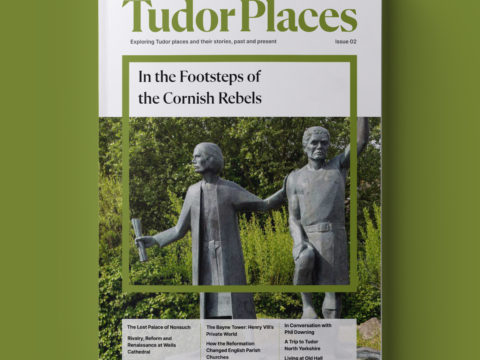Katharine of Aragon: Life Story
Chapter 2 : Alliances
Ferdinand and Isabella’s strategy was political as well as military. They planned a series of marriages for their children which sought to isolate France politically. The most important alliance of all was with Portugal. It shared a border with Castile and also sheltered Isabella’s former rival for the throne in a Portuguese convent, so, peace had to be maintained. This was achieved first through the marriage of Ferdinand and Isabella’s oldest daughter, also named Isabella, to Crown Prince Alfonso, then, following his death, to his cousin Manuel.
The next element of the plan was a brilliant double alliance with the House of Hapsburg. The Holy Roman Emperor elect (he was never actually crowned) Maximilian II had two children – Philip the Fair, who had inherited the duchy of Burgundy from his mother, Mary, and Marguerite of Austria. These two siblings were paired with Katharine’s brother Juan, and sister, Juana. This meant that France would be entirely surrounded by hostile forces.
Katharine’s own future was decided when she was around four years old. In the Treaty of Medina del Campo of 14 th November 1489, her parents promised her to Arthur, Prince of Wales, son of Henry VII of England. This match was rather more of a gamble for Katharine’s parents in that the Tudor dynasty was not well established in England in 1489 and there was the possibility that Henry VII might be deposed. Nevertheless Ferdinand and Isabella were sufficiently impressed by the English King to enter into the betrothal. The plan was for Katharine to travel to England when she reached the age of 14.
When Katharine was 10 her sister Juana sailed for Burgundy. The fleet which had delivered her returned to Spain carrying Marguerite of Austria, Juan’s bride. On 18th March 1497 in the city of Burgos in northern Castile, Marguerite was presented to the Spanish court. Katharine, wearing a gown of brocaded cloth of gold together with a crimson scarf and a black mantilla, was in attendance, together with her sisters, the recently widowed Isabella, and Maria. The influence that the marriage of Juan and Marguerite may have had on Katharine should not be overlooked in considering her later life.
The young couple were aged about seventeen and were so infatuated with each other that Juan’s doctors warned him to restrain his physical passions. His sudden, premature death, after only six months of marriage was diagnosed as “ overexertion in the marital bed .”
Ferdinand and Isabella were devastated personally and politically. A further blow fell when Marguerite miscarried a male foetus. With no child to keep her in Spain, Marguerite returned to her father in Burgundy, but she had struck up an enduring friendship with Katharine which became important later when Marguerite acted as Regent of the Low Countries for Charles, son of Philip and Juana.
In some ways Katharine’s childhood was physically demanding – the peripatetic Spanish court travelled far and wide across the kingdoms – accommodation was in inns or abbeys, provisions were not always easy to find and the language and customs of the different sub kingdoms varied widely. The Royal household packed its belongings so frequently that Katharine and her sister Maria regularly had their own mules for carrying their gear. Of the 16 Christmases of Katharine’s childhood, 13 were spent in different cities. Her parents were as loving and attentive as it was possible for monarchs to be – there are records of Ferdinand buying dolls for his daughter and the children were kept close.
Whilst the Spanish court was very formal in its manners, with men and women largely segregated, dancing and music were popular pastimes and Queen Isabella’s library of chivalric romances included tales of King Arthur and his knights and the Spanish tale of chivalry, Tirant Lo Blanc.
Personal hygiene was so highly prized that at Isabella’s court, she and her daughters bathed and washed their hair more frequently than was perhaps the norm in Europe.
Ferdinand and Isabella were determined to show their power and authority across the land and part of this involved the imposition of a strict Catholic culture. Mediaeval Spain had accepted the coexistence of the Christian Jewish and Muslim faiths. In 1492 the Jews were expelled from Spain and Catholic orthodoxy imposed with the introduction of the Inquisition. On the positive side, the Spanish church was reformed to remove many of the abuses that were apparent in the rest of Europe.
Katharine of Aragon
Family Tree






